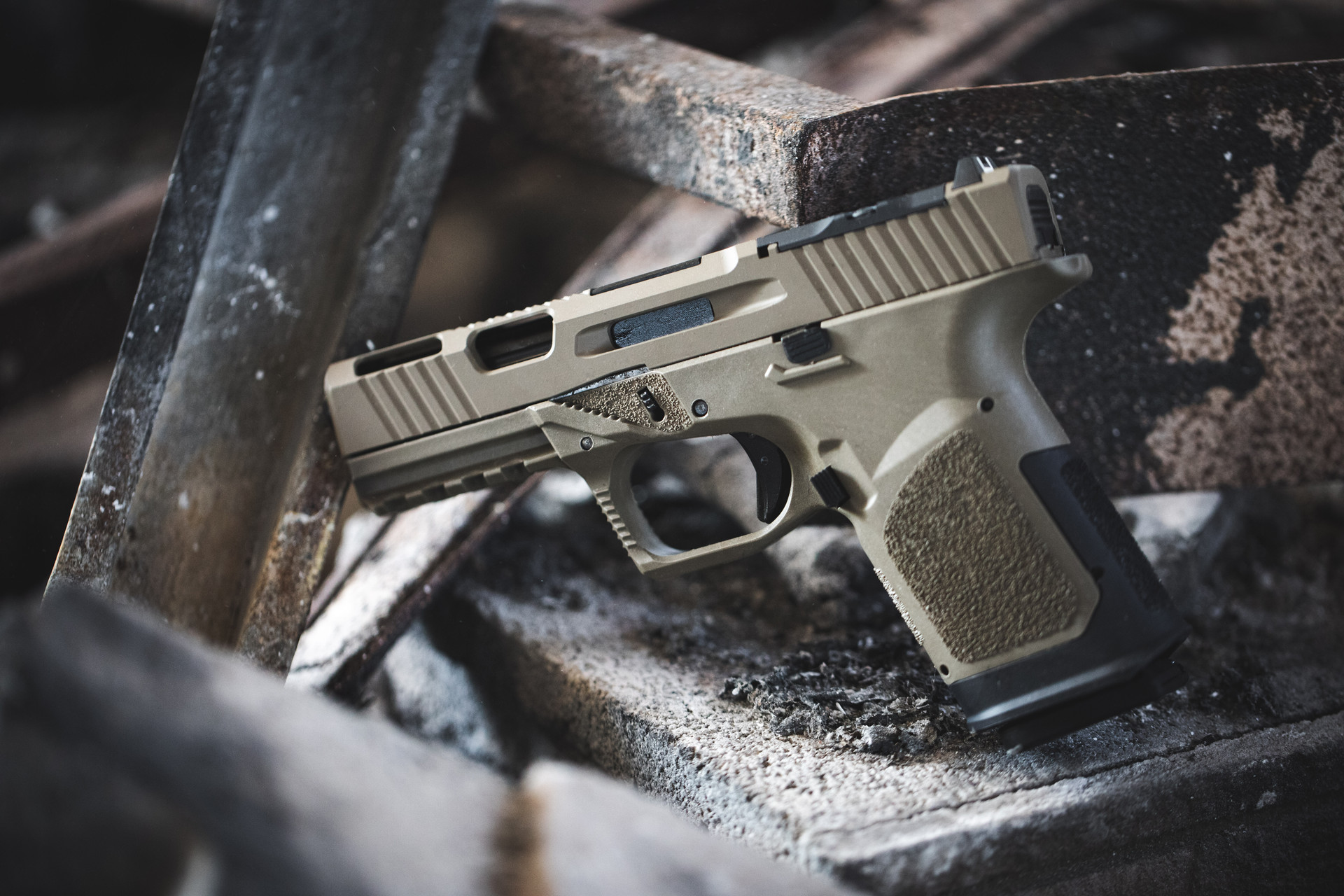GST-9: FAQ
With the release of any new product, and especially one with so much demand, there are bound to be questions, speculation, and rumors. Rather than spend all day responding to comments and questions across the internet (although it gives us a good excuse to be on Reddit and ARFCOM during work), we feel it was more efficient to answer all the FAQs in one place.
The rear rails are thinner than Glock®!
Glock® rear rails average around .050”. Our rear rails are .048” +/- .003 which means they are between .051 to .045 (18 gauge stainless steel) which encompasses Glock’s® tolerance. From there we add on a NiB coating. The thickness of our rail is engineered into our frame design. Our design was extensively tested with no issues in durability, safety, or functionality. The only issue we have experienced is a lot of premature arthritis from us loading so many magazines.
There’s no front polymer posts! How will the slide be supported?
The slide isn’t supported by polymer posts, nor should it be! The polymer posts on a factory Glock® are tertiary recoil-buffers. If polymer was supporting a slide, it would result in increased resistance (causing malfunctions) and very quickly wear away. They are already redundant in an OEM Glock®. The extended length of our locking block further buffers and adds stability beyond the OEM Glock® locking block.
Why do you use a 2-Pin design, and not 3-pin? Don’t less pins make it weaker for larger calibers?
No, in fact, Glock® is discontinuing the 3-Pin design in their latest generation. Secondly, we still have a 3-pin design. The "B2" hole is our locking block pin, which prevents the locking block from rotating around the trigger pin. While the “A” hole is a trigger pin, it also functions as a secondary locking block pin. Relocating the locking block pin away from right above the trigger pin also eliminates thin areas in the plastic, allowing for an even stronger frame able to stand up to more abuse.
But some competitors have thicker rear rails and polymer posts and three-pin designs!
Our frame was designed by engineers who have been working with high-end aftermarket Glock® parts for much of their careers. Our engineers partnered with experienced shooters, and real-world experienced combat veterans. This project was in development for several years, and we are absolutely confident that we have the best product on the market.
My slide wobbles a little, what if it releases the striker and causes a discharge?!
A discharge would be impossible without pulling the trigger, for several reasons. First, there is a safety-plunger that blocks the striker from moving forward, that is lifted by the trigger bar. Secondly, our requirement for striker engagement is the exact same as an OEM Glock®. That said, always check striker engagement like you should an OEM Glock® frame ( per their owners manual) or any 80% pistol frame. Always be mindful to check if you change your trigger or striker as well, because of varying tolerances from manufacturer to manufacturer.
Ok, but my slide does actually have some play, why is that?
There are varying amounts of normal play depending on tolerances among manufacturers. Our longer rails result in less unengaged area which will reduce play. Less unengaged space = less room for slop. We’ve all seen many posts of builders endlessly grinding the rails on competing frame kits while others work right out of the box. When mixing and matching components of various brands, this can happen. We’ve put a lot of time and expertise into our product and build kits to eliminate as much as possible trial and error fitment issues so you can enjoy shooting your GST-9 right out of the box.
Have additional questions?
We love talking about our products, and all the work we’ve put into them. If you want to know more, feel free to leave a comment below, and we will do our best to answer it!



 Back to List
Back to List